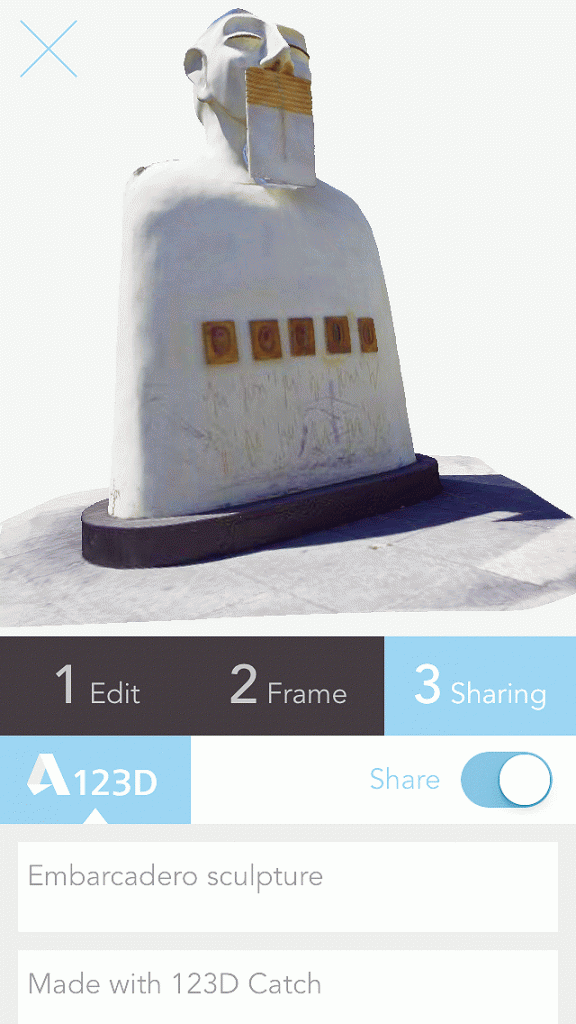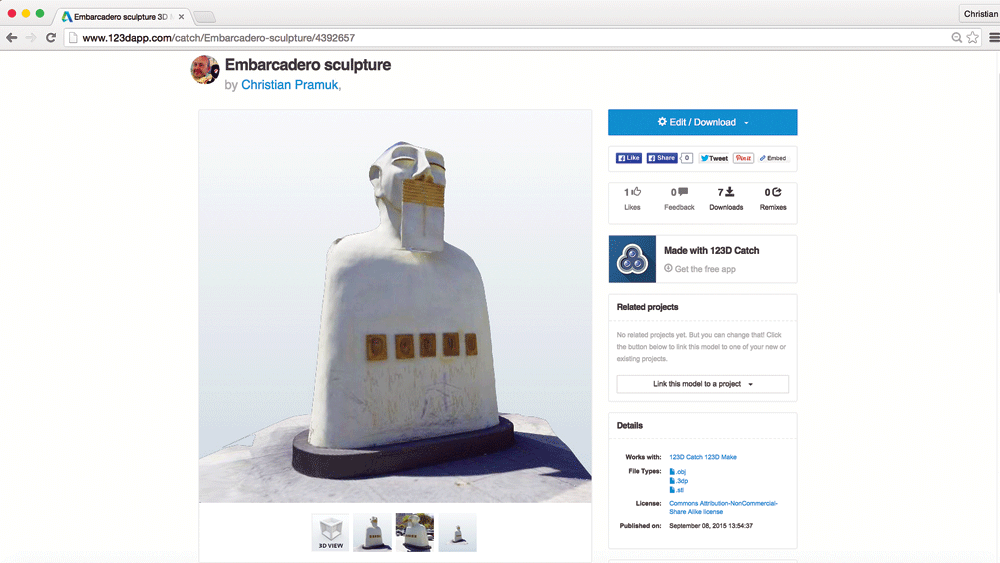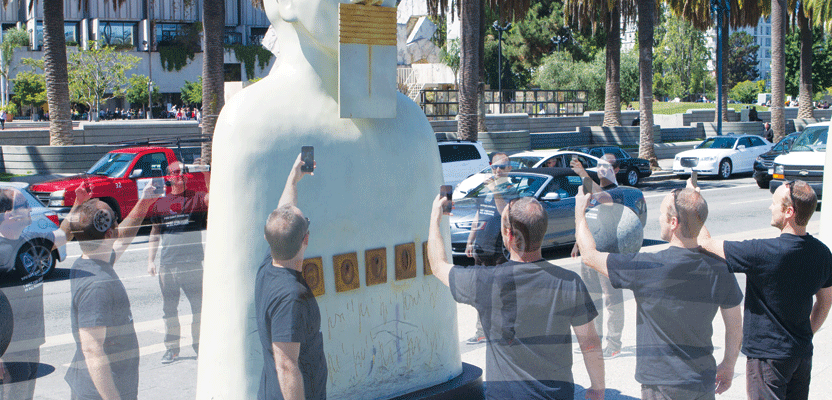How to Make A 3D Model of Your Sleeping Cat
Stereoscopic imaging, better known as 3D, is not new.
In the 16th century, “binocular” images were viewed cross-eyed. In 1838, Sir Charles Wheatstone invented the stereoscope to give depth to images. It presented two offset 2D images separately to the left and right eye of the viewer, which the brain then combined to give the perception of 3D depth. In 1849, Sir David Brewster invented the first lens-based, hand-held stereoscope. The View-Master stereoscope that you might remember from your childhood was patented in 1939. The 1950s saw a boom in 3D movies.
 Now, you can not only view 3D models but create them yourself. All you need is a smart phone and Autodesk’s free 123D Catch application. Here’s how.
Now, you can not only view 3D models but create them yourself. All you need is a smart phone and Autodesk’s free 123D Catch application. Here’s how.
Choose your subject—such as a toy car, a pile of laundry, or your cat sleeping. Make sure it is not transparent or reflective.
Choose the setting. It is best if you can easily move around your subject 360 degrees, although 180 degrees can work as well.
Adjust your lighting so that you don’t have sharp shadows. Natural light on an overcast day is usually best.
Take 30 to 70 photos, the more the better, all around your subject and from above and below, with a lot of overlap between them.
Submit them via 123D Catch.
Wait. In the cloud, Autodesk will convert the photos into a full-color 3D object in the OBJ file format, texture it, and then convert the textured OBJ file into a streaming 3D model for display on your mobile device.
“This finalizing bit can be somewhat complex, and usually we see folks get hung up here if the project gets really huge,” says Christian Pramuk, Autodesk’s product manager for 123D Catch. Just wait, though.
On a computer, download and install Meshmixer, another free offering in Autodesk’s 123D Catch family of programs. From this program, you can access your 123D Catch projects as well as more than 10,000 models made by other users. You can download any model in one of three export formats: 1) an STL file, which is a typical 3D printing format, 2) a mesh package, which is the color version of it and comes with an OBJ file and a texture, and 3) a photo package, which consists of the original set of photos that you uploaded to create the capture.
“Meshmixer can help clean up models and make them water-tight for 3D printing,” says Pramuk. “The strength of all these 123D Catch applications is that they are connected by a common account. So, for example, with your iPhone, you can capture something while you are out on the town, and then when you get back home you can do some further refinement on your desktop.”
For professional uses, you can open your model in Autodesk Maya 3D animation software or Autodesk 3ds Max 3D modeling, animation, and rendering software.

From the application on their mobile phones, users upload their photos for processing into 3D models.
I asked Pramuk a few questions.
Where does 123D Catch fit with other Autodesk products, such as ReCap 360 and Memento?
Pramuk: 123D Catch is a mobile version for consumers to turn 3D photographs into a 3D model. It is a way to bring 3D to the masses. We see this as the next big revolution of sharing. With smart phones, many people share photos and now even videos. It is inevitable that we will get heavy into 3D sharing as well.
Will this explosion of 3D be another huge burden of data on the internet?
That’s why we developed this mobile format. The mobile versions that you see on your phone are a lot smaller [than the full models in the cloud], so that they can be downloaded and shown in a few seconds without ruining your data plan.
Do you expect a certain percentage of users to upgrade to a pay version?
Perhaps, indirectly. We launched the desktop app first, then released 123D Catch in October 2011, and shortly after came out with the mobile version. We really see that that’s the way to get people into 3D and to get people thinking in 3D. They just have to perform the familiar task of taking photographs, but with a little more attention. With some practice, you can get better at it.
We have other applications, such as 123D Design that may be more suited toward modeling stuff with hard edges and specific tolerances, whereas 123D Catch is really good at capturing, for example, a big pile of laundry or your dog in a funny sleeping position or a rock wall at an ancient historical site, that kind of thing.
How would you compare the capabilities of this free, consumer product with those of your professional products?
Our Memento product is in beta right now. There’s ReCap 360, in which you can also create 3D models from photographs. These products are aimed at professionals—maybe someone with a digital SLR camera with a very high-end lens or somebody with a UAV who wants to do a digital survey. Technically, under the sheets, we are using the same engine, more or less, to create the models.
The difference is that we are allowing Memento and ReCap to use more photographs. 123D Catch limits you to 70 photos; ReCap goes to 250. You have a lot more data, and it exponentially increases the computational power and the quality of your model. You can also upload photographs at a higher resolution. Some of the digital cameras have 80 megapixels, which is an insane amount of information.
To make an analogy, Memento and ReCap 360 are for museum curators, whereas 123D Catch is for students on a field trip.
Besides resolution, what other major differences are there, in terms of ability to edit, export, etc.?
123D Catch and Meshmaker evolved to be my products because I started with 123D Catch and then I was using and recommending Meshmixer to edit the captures. Memento is the professional version of that combo and uses some of Meshmixer’s technology. The difference there is that you can actually submit the photos within Memento, and the meshes you get back are so huge that we needed to build this out so that you can handle these large meshes. Most applications would not be able to process 80 million polygons in a scene. So, what differentiates Memento is that it can handle this many triangles and it can also help you reduce those down into something more consumable for other outputs.
ReCap is combining different photo modeling and laser scanning workflows and helping to get the reality capture data into other Autodesk applications such as Revit. Memento and ReCap can be used by heritage experts, film makers, game developers, architects, engineers, and medical experts. They are going to be able to get the best possible quality because of those upper limits of resolution and number of photos that they can submit.

